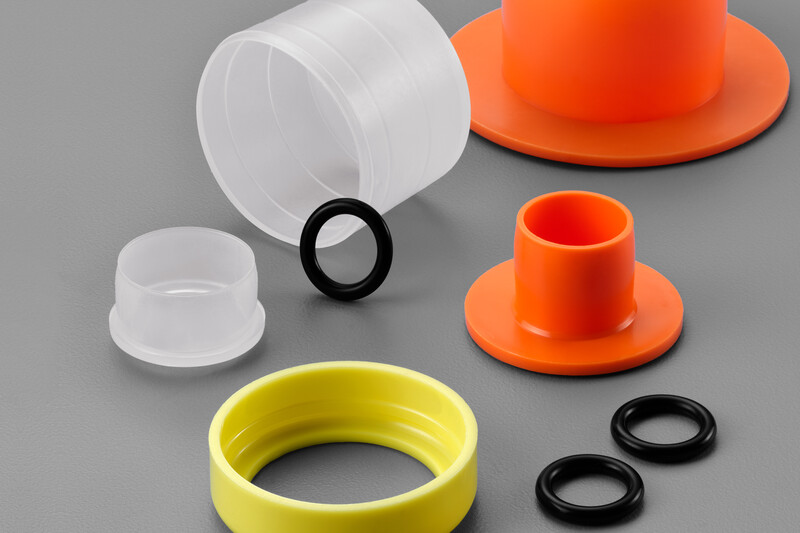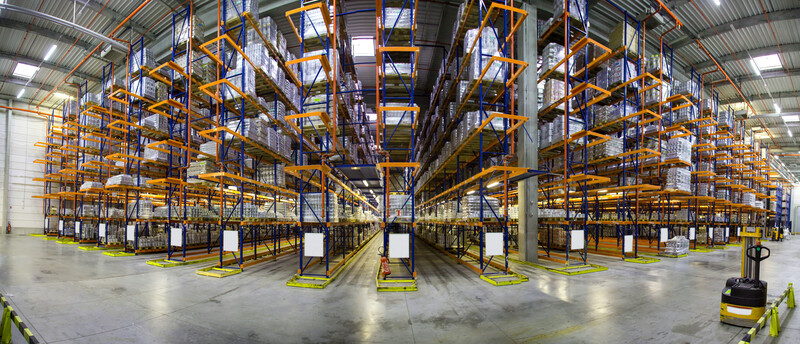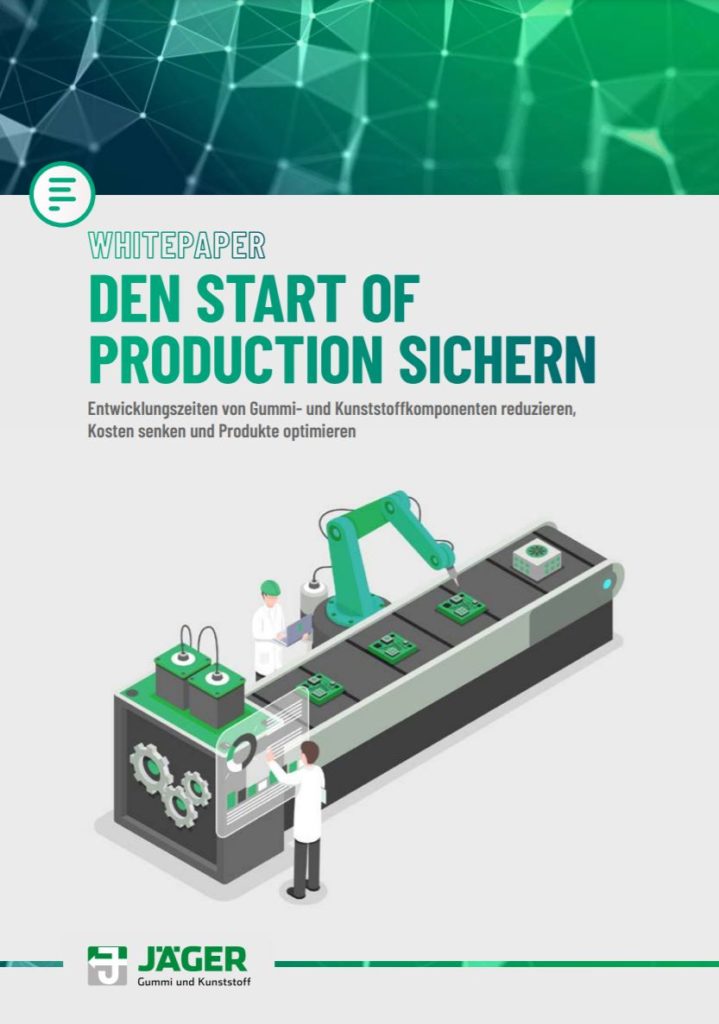
JÄGER Business Blog


WHITEPAPER
Find out which factors influence your SOP!
In addition to standard compounds, special compounds are also used in the rubber and plastics sector to optimally meet the respective application requirements. Consequently, regardless of the geometry of the component, companies cannot always simply order catalog goods from any supplier. For spare parts supply, this can be a challenge.
When a rubber or plastic component fails or is in danger of failing, the company should first ask itself a few questions to identify the best possible solution approach:
If the original supplier of the component is no longer available, Purchasing must look for an alternative. This can be problematic if the component is a custom development or tool-bound. Depending on the nature or geometry of the required spare part, a new tool may be required if the old one is no longer available. The availability of the compound used to date for the component must also not be lost sight of. If necessary, alternative compounds or substitutes should be examined.

Stock with spare parts
The situation analysis provides an overview of the challenges involved in procuring spare parts. The next step is to compare the effort with the expected added value.
If equipment and materials are still available on the supplier side, purchasing can simply reorder the component. Otherwise, the company must analyze what costs will be incurred by ramping up production capacities again.
If the material is no longer available on the market, a new selection is due. Although this process involves costs, it also offers the opportunity to realize optimization potential.
Older materials may no longer meet applicable specifications and requirements or the current state of the art. Replacing them with more modern variants can make a component lighter, more resistant and less sensitive to environmental influences. Of course, such a material change requires that the tool be compatible with the new material.
If the tool is damaged or incompatible with current machinery, the company must decide whether it wants to incur the adaptation costs. On the one hand, this increases the unit cost of the replacement part. On the other hand, a new development of the component is considerably more expensive, but also holds optimization possibilities. Both the material and the geometry can be put to the test on this occasion.
In some cases it is possible to produce spare parts and also tools for small series by 3D printing. However, not all materials and geometries are suitable for this process. Ask your production partner whether 3D printing is an option for you!
The linchpin of a robust spare parts supply is supply chain management. Transparent communication is essential here. As soon as the stock of a component is nearing its end, the company should inform its suppliers and order spare parts. At the same time, the customer should be informed as soon as problems arise on the supplier side.
Building redundancies within the supplier network makes sense, but is not always practical. Non-tool components, for example, can easily be sourced from several suppliers in parallel, because the equipment needed to manufacture them is widely available.
However, the situation is different for tool-based components. Since investments in tools are associated with high costs, only one tool is ordered per component. For this reason, companies may also purchase their spare parts from only one supplier. In such cases, purchasing usually relies on a contractual solution to ensure the supply of spare parts (e.g. an after-sales agreement or a framework agreement).
If a supplier of tool-related spare parts announces that it will cease operations, the company should secure the tools for its components as quickly as possible. If the customer owns the tooling, it should withdraw it and make it available to another supplier. If the tool belongs to the supplier, it is advisable to buy it up so that spare parts can continue to be produced.
The low level of standardization and the dependence on tools make the supply of spare parts in the rubber and plastics sector a challenge. Forward-looking supplier management is therefore essential. Companies should always keep an eye on where there will be demand in the future and how this can be covered. If a spare part can no longer be easily reordered, the material, geometry and processes must be put to the test. This opportunity often reveals unimagined optimization potential that can be exploited with comparatively little effort.

Whitepaper: Secure the Start of Production
Learn which factors influence your SOP!

Share post now!
Jäger Gummi und Kunststoff GmbH
Lohweg 1
30559 Hannover
Tel. +49 511 – 53580
Fax +49 511 – 553394
info@jaeger-gk.de
Management:
Dipl.-Ing Sebastian Jäger
Julius Jäger, M.Sc.
Hanover Register Court HRB 59798
DE 813 314 161

Petra Dirlenbach